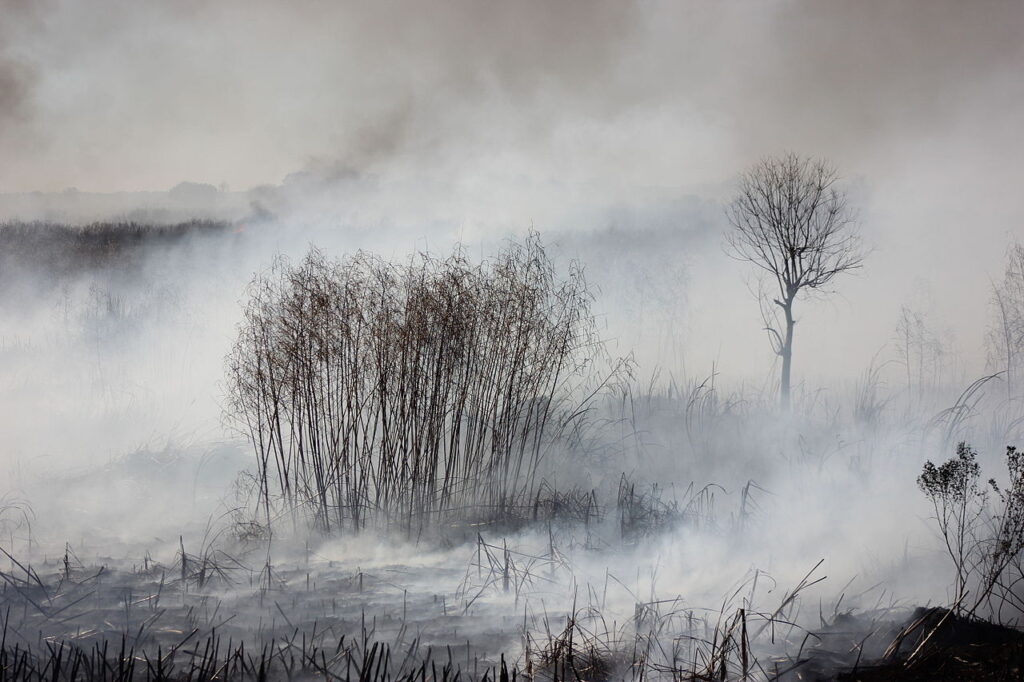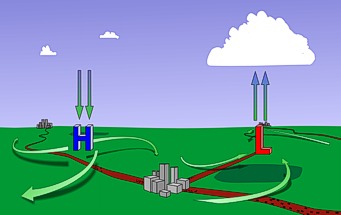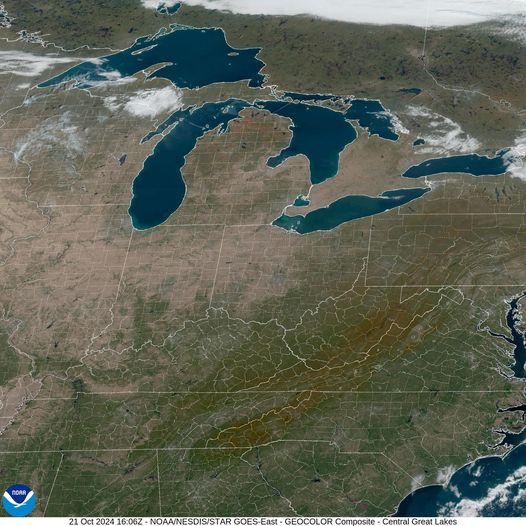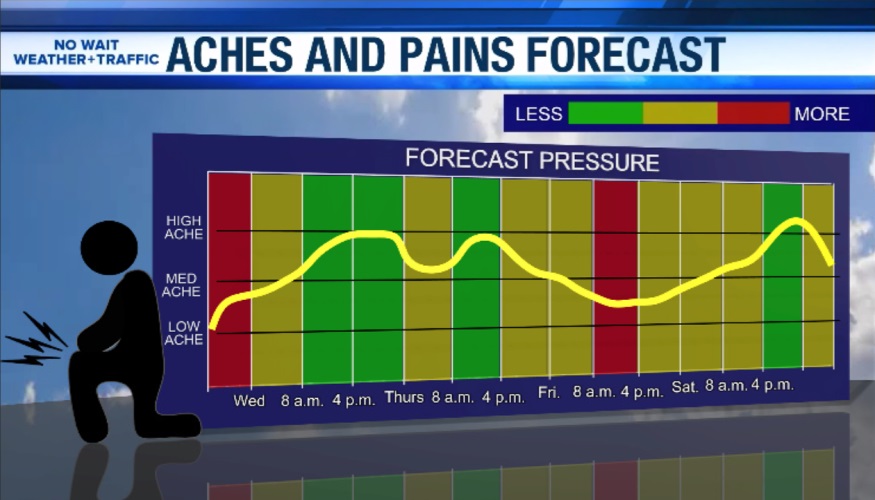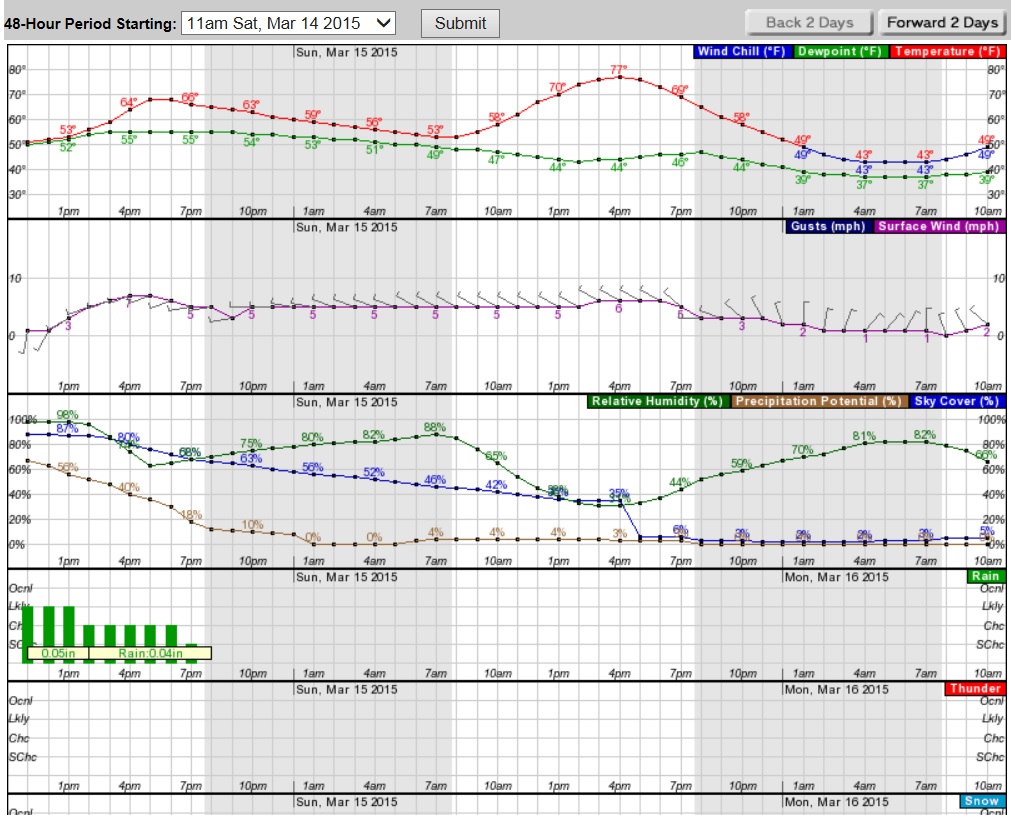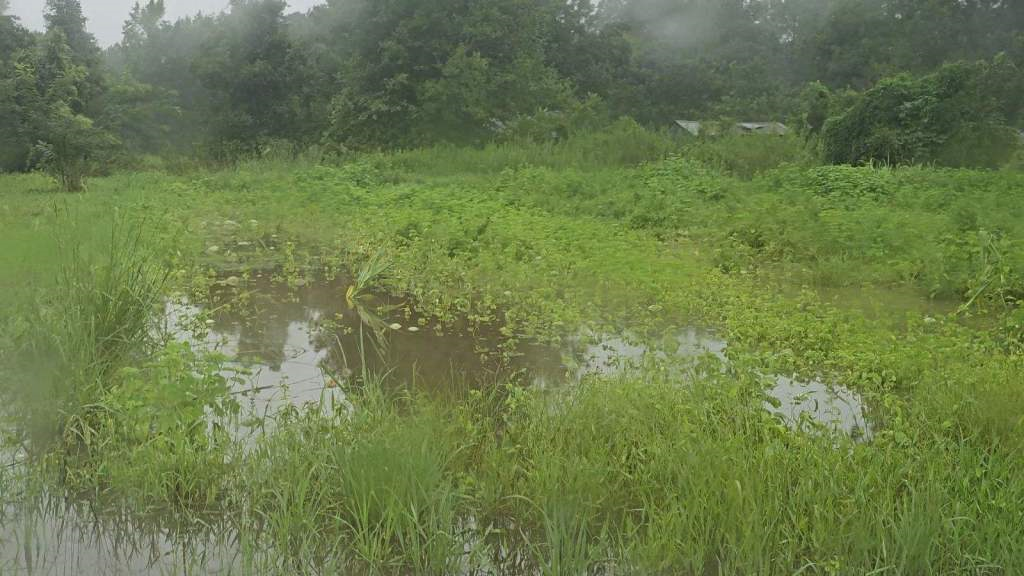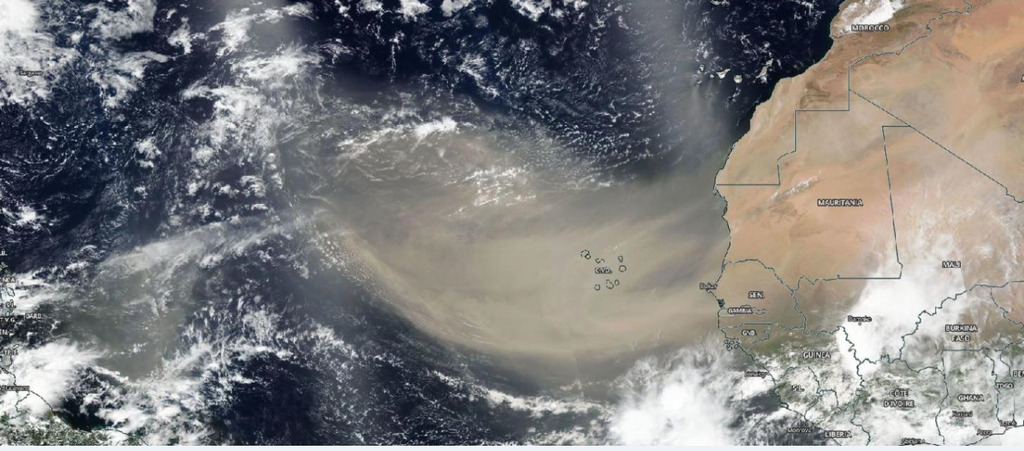In the last few weeks NOAA has declared the end of the weak La Niña that has been present in the eastern Pacific Ocean and the return to neutral conditions. I want to take time today to discuss what it means for our summer growing season in the United States. I will also provide some links to guidance for how it might affect conditions in other parts of the world for our non-US readers.

Why do we keep track of La Niña and El Niño?
We have discussed El Niño and La Niña (collectively called El Niño Southern Oscillation or ENSO) many times in this blog. You can read more details here, here and here, for example. Over the past winter, the Eastern Pacific Ocean has been colder than normal; this is considered a La Niña event. We were waiting for it all fall but it was not officially declared until early January, and it was considered a weak event with cold conditions that barely met the criteria to be called a La Niña. A couple of weeks ago NOAA noted that the ocean temperatures no longer met the threshold to be called a La Niña and declared that we are back to neutral conditions with ocean temperatures returning to near-normal conditions. Where it goes from here is still uncertain, but the prediction is that we will be in neutral conditions for most of the summer and perhaps all the way through the rest of 2025.
We track ENSO carefully because it is an internal oscillation of the atmosphere-ocean circulation that has big implications for variations in climate across the globe. If we know what phase of ENSO we are in, we can make some statistical predictions of what the climate is likely to be at our locations as well as others around the world. This is because the ocean temperature is linked to vertical cloud growth, which can act like a rock in a river, diverting the high-elevation winds north or south. Those winds push around the storms that bring clouds and precipitation to the regions where they are located, so that gives us some knowledge of what weather we might generally expect to experience. Of course, each El Niño and La Niña are different because the atmosphere is constantly adjusting in relation to other factors like droughts and floods, heat spells and cold outbreaks, so every event is unique, but statistically there are known relationships that give us some confidence in how our coming climate for at least the next few months might be.

What do we expect this Northern Hemisphere summer?
The strongest statistical relationships between the ENSO phase and climate conditions occur in the winter months, so the climate pattern this summer will be affected in some ways by the neutral conditions but will be more affected by other factors. The biggest impact will come during the Atlantic tropical season, since neutral years are linked to higher than average numbers of named storms. And sure enough, this year the early seasonal forecasts are for more storms than usual. The number is likely to be a little lower than last year because the Gulf and the Atlantic Ocean are not as warm as they were last year, although they are still warmer than average. Tropical cyclones in the Eastern Pacific Ocean could be fewer than normal because that is typical in a neutral year, but the water there is pretty warm so that would likely lead to more storms.
NOAA’s seasonal forecasts
NOAA’s Climate Prediction Center has issued their 3-month forecasts for the early summer (May-July) and late summer (August-October). The maps are shown below. For the early summer period of May through July, most of the country is likely to be warmer than normal with the exception of the Northern Plains, which has equal chances of above, below, and near normal temperatures. Note that the depth of the color shows how high the probability of that condition is, not how hot it will be. The rainfall this summer is expected to be drier than normal in the western half of the United States except for southern Arizona and New Mexico, which has a chance of experiencing a wetter than normal monsoon. The northern Gulf Coast and the Eastern seaboard is all expected to be wetter than normal, at least in part because some of that rain will be coming from the tropical storms that are expected to occur during the hurricane season from June through November.

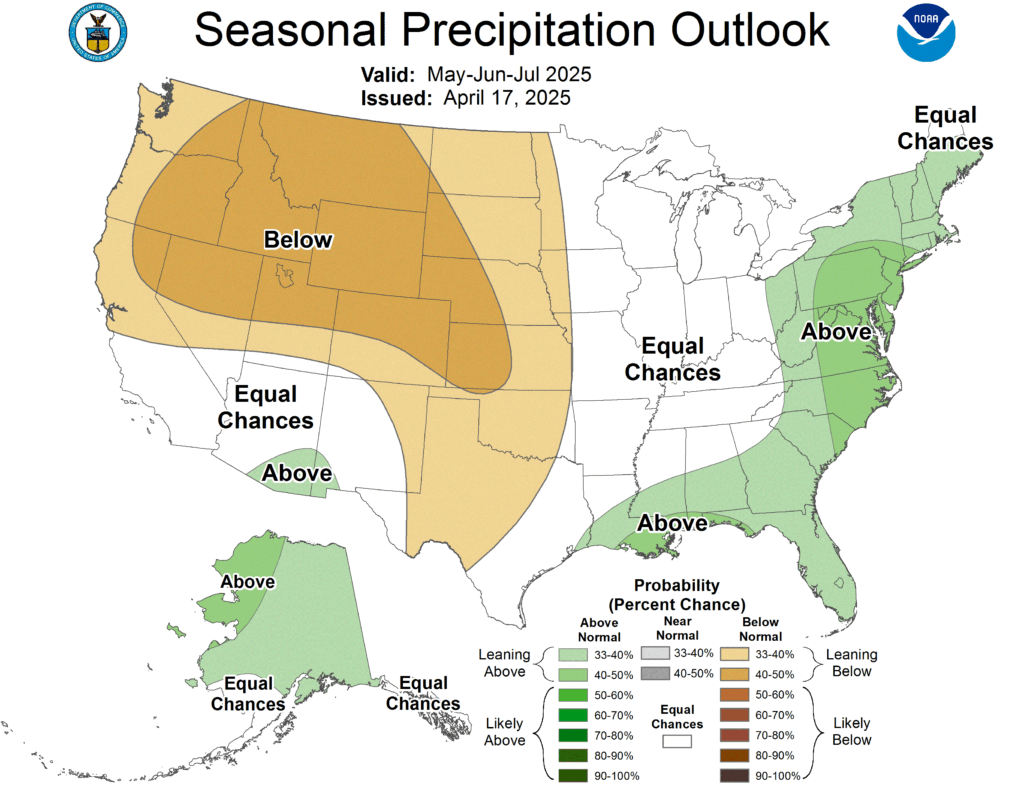
For later summer (August through October), all of the country is expected to be warmer than normal, with some areas more likely than others. Rainfall continues to show a wetter pattern than usual in the Southeast and in the monsoon region but is likely to be drier than normal in the northern Plains.


You might ask why the maps show a tendency towards above normal temperatures. That is mainly due to the rising temperatures associated with global warming. As temperatures continue to rise due to the greenhouse gases being emitted into the atmosphere, on the average each year will be a little warmer than the last, although of course there are year to year variations due to ENSO and other variations like ocean temperatures and drought that affect individual years’ statistics. But in the absence of detailed information about the coming year, it is a better bet that we will get a warmer than average year than a colder than average one.
How can gardeners use that information to plan this year’s gardens?
If you are just starting to plan or plant this year’s garden, you can use the information from the CPC to help determine what kinds of flowers and vegetables to put in. If you know that the summer is likely to be warmer than usual, then you can purchase plants that love the summer heat! Be prepared to water them, though, unless you are planting succulents or cacti. This will be especially true if you are also predicted to be drier than normal over the summer, because your gardens are likely to demand a lot of water if there is no rain to quench their thirst. You can help keep moisture in the soil by adding arborist chips as mulch over the surface of the soil to minimize the loss of soil moisture from the root zone.

Since neutral conditions, where neither El Niño nor La Niña are present, are associated with more tropical storm activity in the Atlantic, if you are living in an area that is normally affected by those storms, you should prepare ahead of time by storm-proofing your garden and home and watching the forecasts carefully once we start to get into the active season. It is never too early to prepare!
If you live in another part of the world, there are also climate patterns associated with La Niña and El Niño that you can use to make similar garden plans. You can find them at IRI – International Research Institute for Climate and Society | ENSO Resources and Global impacts of El Niño and La Niña | NOAA Climate.gov.
I hope you have a great growing season and enjoy the fruits and the scents and sights of your garden if you are in the Northern Hemisphere or planning for the next growing season if you are in the Southern Hemisphere far from the equator. We love to see your photos on our Facebook page!



